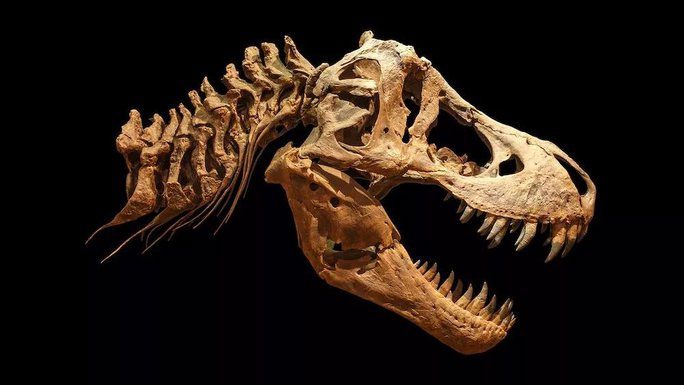One of the most dangerous creatures of all time could be twice as large and 70% heavier than previous estimates, explaining how its species dominated the age of the dinosaurs.
According to Live Science, a team of scientists from the Canadian Museum of Nature (Ottawa, Canada) studied a model based on ancient paleontological data about the Tyrannosaurus rex (T. rex) and discovered that they were more dangerous than previously imagined.
The largest T. rex ever excavated is Scotty, a specimen with nearly complete skeleton and estimated to weigh up to 8.87 tons when alive.

All the giant T. rexes that humanity has ever known may just be the smallest ones – (Photo: LIVE SCIENCE)
However, the new research confirms that the great Scotty is still small compared to the largest members of its species. The authors examined fossil records and various research data, including a remarkable statistic estimating that up to 2.5 billion T. rexes once roamed the Earth.
We have only discovered a tiny fraction—32 fossilized skeletons of adult T. rexes—and have based our understanding on that limited number.
The team from the Canadian Museum of Nature, led by paleontologists Jordan Mallon and David Hone, who is also a senior lecturer at Queen Mary University in London (UK), analyzed the population, average lifespan, sexual dimorphism, and more of the specimens to create a model of the largest possible adult T. rex.
The results suggested a T. rex that could weigh 70% more than Scotty, approximately 15 tons. At this weight, the largest T. rex would have to weigh twice as much as the great Scotty.
Another model even suggested that a T. rex could reach a weight of 24 tons; however, some inconsistent data has disproven that model.
This intriguing investigation highlights the enormous challenge paleontologists face in reconstructing the estimated appearance of a prehistoric monster based on often very limited fossil records.
“This reminds us that what we know about dinosaurs is very little. The sample sizes are too small,” commented paleontologist Thomas Carr from Carthage College (Wisconsin, USA), who did not participate in the study.


















































